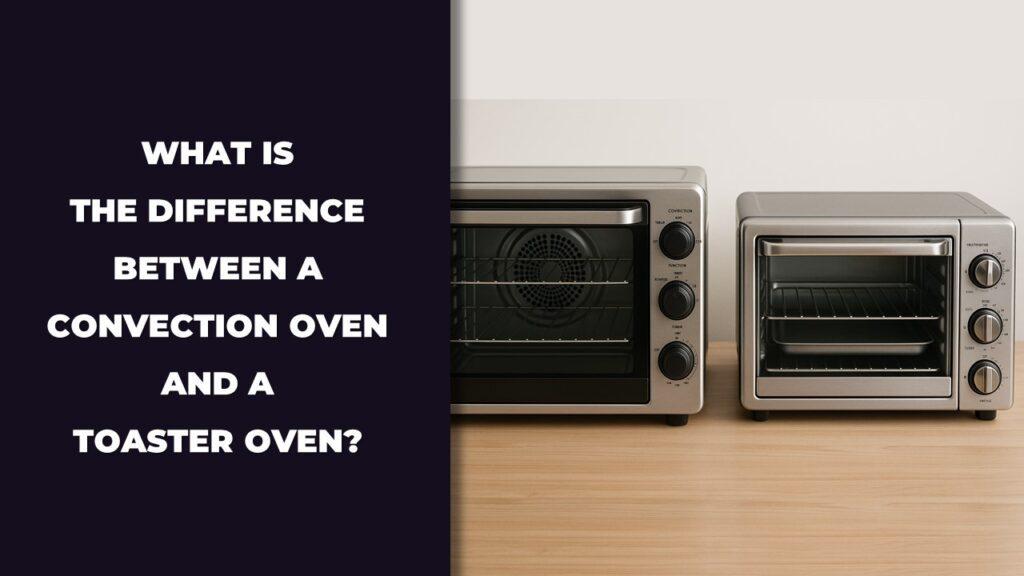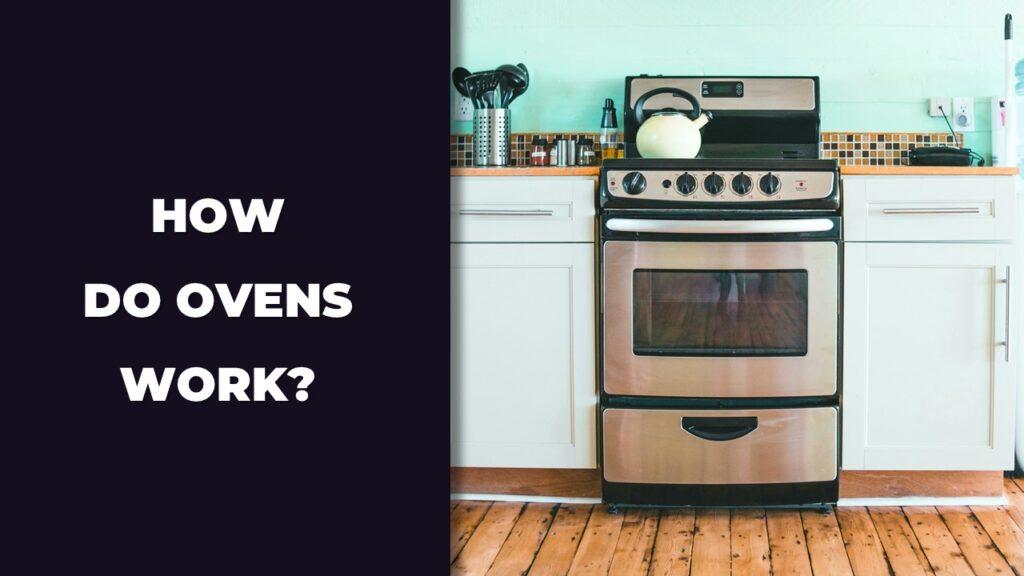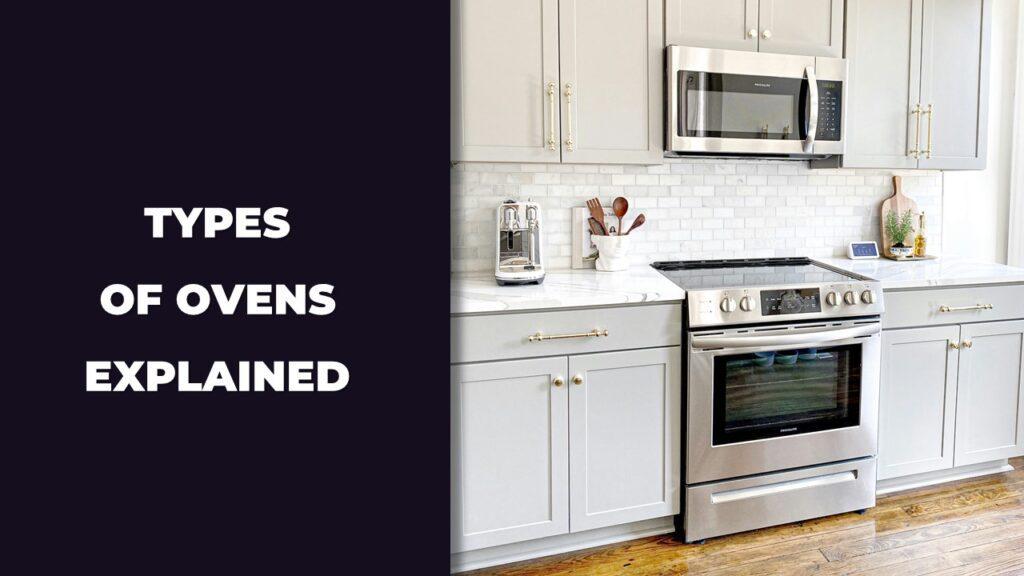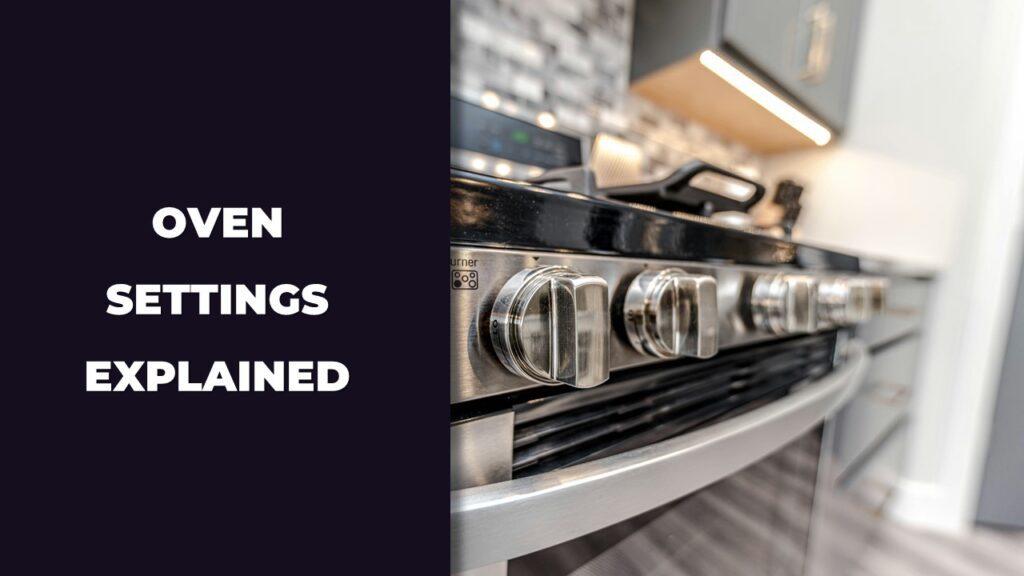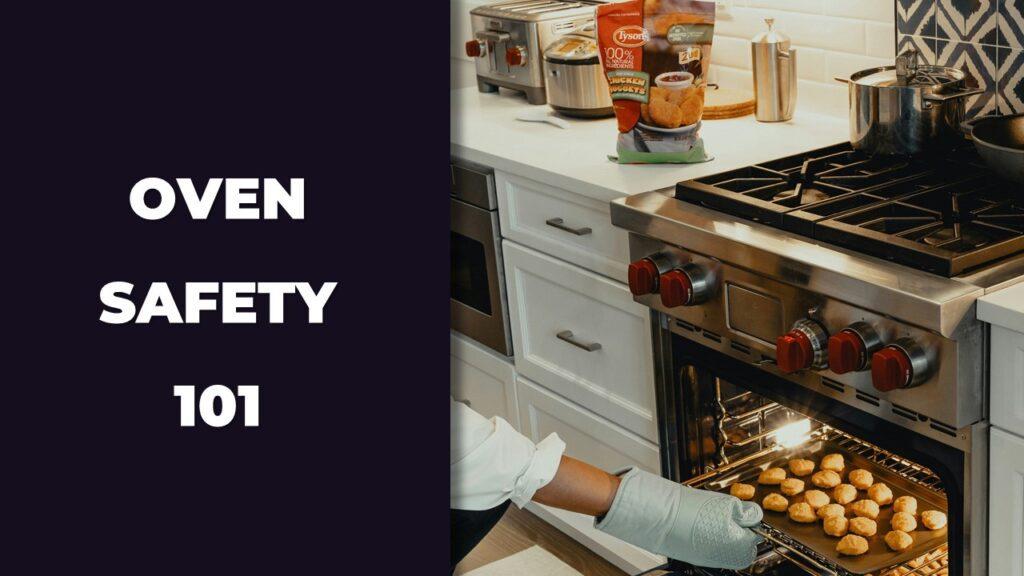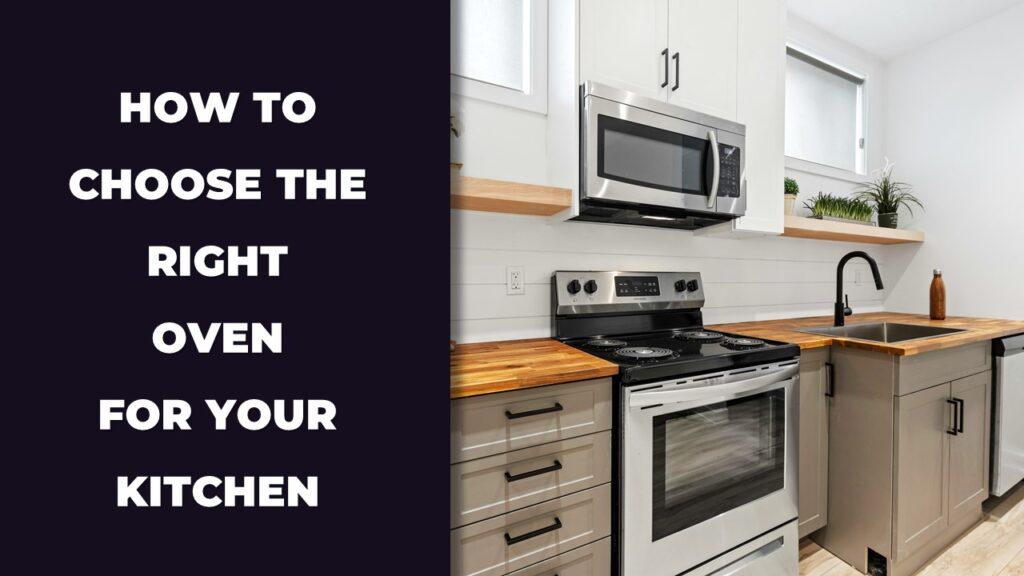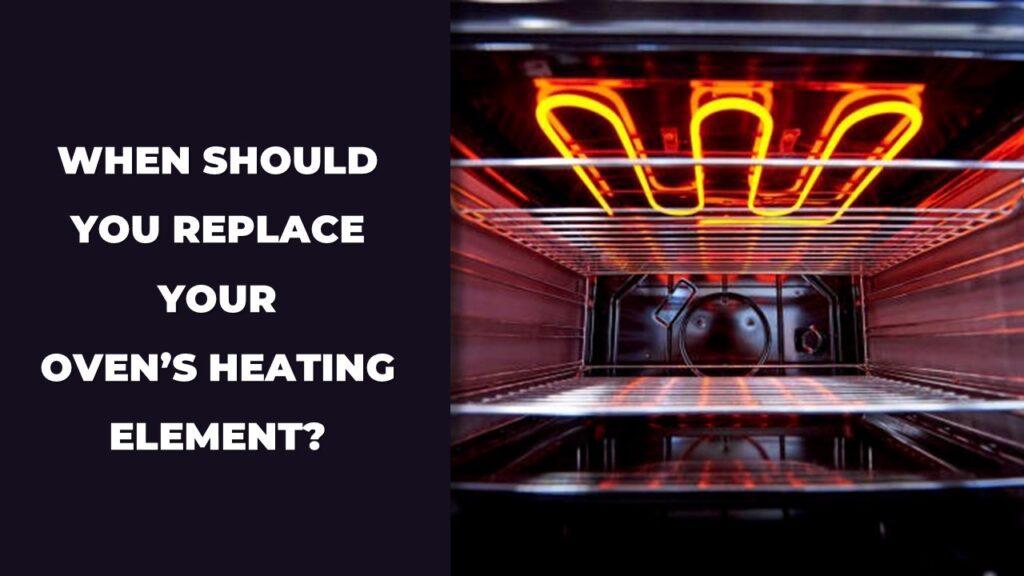
You should replace your oven’s heating element when it stops heating evenly, takes forever to preheat, or no longer glows orange when turned on. If you see cracks, burns, or blistering on the element, that’s a red flag. These signs usually mean the part is worn out and not working as it should, which can mess up your cooking and even cause safety issues.
In this article, we’re going to walk through the most common signs of a failing oven heating element, how long they usually last, and what you can do if yours goes bad. Whether you want to try a DIY fix or need to know when to call a pro, we’ve got you covered.
Common Signs Your Oven’s Heating Element Needs Replacement
Here are some of the common signs your oven’s heating element might be going bad:
- The element no longer glows bright orange when heating
- You see cracks, blistering, or burn marks on the element
- Food cooks unevenly or takes longer than usual
- The oven takes too long to preheat
- The temperature keeps swinging up or down
- Your electricity bill suddenly jumps without explanation
If any of these sound familiar, your heating element could be the issue. Below, we’ll break down each sign and explain what it means.
The Element No Longer Glows Bright Orange
When your oven is working properly, the heating element should glow bright orange once it gets hot. This glow shows that electricity is flowing through the coil and creating heat. If your element is heating unevenly or not glowing at all, that usually means it’s damaged or burned out. A weak or spotty glow often points to a failing coil.
To test this, turn your oven to 350°F and wait about 10 minutes. Peek inside—without opening the door fully—and check the color. If it’s dull, patchy, or completely dark, it’s time for a replacement.
Visible Damage On The Element
Cracks, bubbles, black spots, or areas that look burnt—these are all signs your oven’s heating element has seen better days. Heat wears down the metal over time, and eventually, those weak points turn into complete failures. Even if your oven still heats, damaged elements can lead to dangerous situations or cook food unevenly.
You can often spot these issues just by looking inside your oven. If the element looks warped or blistered, don’t ignore it. A broken heating element can arc electricity or stop working altogether.
Uneven Or Incomplete Cooking
If one side of your dish is burnt while the other side is undercooked, that’s usually a red flag. A healthy heating element spreads heat evenly across the oven. But when it’s failing, some areas might not reach the right temperature at all.
This can be especially frustrating when baking. Cakes may rise unevenly, or meats may not cook all the way through. Before blaming the recipe or cookware, try using an oven thermometer to check different zones in your oven. If the heat isn’t consistent, the element could be to blame.
Long Preheating Times
Does your oven take forever to preheat? That might mean the heating element is struggling. As these parts wear out, they can still heat—but it takes them longer to get there. You might notice that your oven says it’s preheated, but the actual air inside still feels lukewarm.
This can throw off the timing of your meals and waste energy. A new element usually gets the oven to temperature within 10 to 15 minutes. Anything longer is worth a second look.
Inconsistent Oven Temperatures
A faulty heating element may work off and on, leading to big swings in temperature. This makes cooking unpredictable and often frustrating. One moment the oven is too hot, the next it’s too cold, and your food doesn’t come out right.
If you’re noticing that your meals never cook the same way twice, try placing an oven thermometer inside and tracking the temperatures across a full cycle. If you see frequent drops or spikes, and the thermostat is working fine, the element is likely the cause.
Surge In Electricity Bills
A damaged heating element can pull more power than usual, especially if it’s working harder to hold the set temperature. Over time, that extra strain shows up on your electricity bill. If nothing else in your home has changed and your bill keeps climbing, your oven could be the hidden culprit.
This is especially common in older ovens. As the element wears down, it becomes less efficient and wastes energy. Replacing it can help bring your power usage back under control.
How Long Do Oven Heating Elements Typically Last?
Most oven heating elements last between 7 to 10 years, depending on how often you use your oven and how well it’s maintained. Some may last longer with light use, while frequent high-heat cooking or lack of cleaning can shorten their lifespan. If your oven is over 10 years old and showing signs of heating issues, the element might be on its last leg.
Let’s break it down:
Average Lifespan (7–10 Years)
Heating elements are designed to last 7 to 10 years under regular use. If you use your oven for daily cooking at moderate temperatures, that’s a good expectation. As your oven gets older, you might notice slower heating, longer cook times, or uneven baking. These signs often appear before the element fails completely.
Usage And Maintenance Impact
How you treat your oven matters. The way you use and clean it can stretch or shorten the life of the heating element.
- Frequent high-heat use: Running your oven at very high temperatures regularly wears down the element faster.
- Harsh or abrasive cleaning: Scrubbing the element or using strong chemicals can damage its surface.
- Buildup of grime and spills: Burned-on food or grease can cause hot spots that stress the element.
- Foil lining the bottom of the oven: This traps heat and can reflect it back onto the element, leading to damage.
- Gentle, consistent cleaning: Wiping down your oven regularly without touching the element can help it last longer.
Troubleshooting Before Replacing The Heating Element
Before buying a new heating element, it’s smart to test a few things first. Not all oven issues are caused by a faulty element. Here’s how to figure out what’s really going on.
Test With An Oven Thermometer
Using an oven thermometer can help confirm if your oven is heating properly.
- Place it on the center rack: This gives the most accurate reading.
- Preheat the oven to a set temperature: For example, 350°F.
- Compare the thermometer reading: If it’s far off from what you set, the element could be heating unevenly or not at all.
- Look for delays: If it takes too long to reach the set temp, the element may be weakening.
Perform A Continuity Test
A continuity test shows whether electricity can still pass through the element. You’ll need a multimeter.
- Safety first: Unplug the oven or flip the breaker before touching anything.
- Remove the heating element: Carefully disconnect it from the oven.
- Touch the probes to the terminals: Set your multimeter to continuity mode and check the reading.
- No reading or beep: That means the element is broken and needs replacement.
- Reading shows flow: The element may still work, and the issue could be somewhere else.
Rule Out Other Causes
If your heating element seems fine, look into other parts that affect temperature.
- Thermostat failure: If your oven overheats or underheats, this part might be the problem.
- Temperature sensor issues: A bad sensor can send false signals to the control board.
- Control board problems: These are less common but can cause strange heating behavior.
- Electrical problems: A tripped breaker or loose wire can make the oven act up.
If you’re not sure what’s wrong, or you’re not comfortable testing wires, it’s okay to call a technician. Better safe than sorry.
How To Replace An Oven Heating Element (DIY Guide)
To replace an oven heating element, turn off the power, remove the damaged element, connect the new one, and test it by preheating the oven. Most electric ovens are designed with replaceable elements, and with a few basic tools, many homeowners can do it themselves. But you should only attempt this if you’re confident working with electrical appliances.
Here’s how the whole process works, step by step.
Safety First
Before touching anything, cut the power to the oven. You can either unplug it from the wall or flip the circuit breaker. This keeps you safe from electric shock while working.
Also, let the oven cool completely if it was recently used. Wear gloves and safety glasses to avoid cuts or burns. If you’re dealing with a wall oven, you might need a second person to help pull it out safely.
Remove The Damaged Element
Find the heating element—it’s usually a thick coil at the bottom or top of the oven. Look for the screws or mounting brackets that hold it in place.
- Unscrew the fasteners: Keep the screws in a small container so you don’t lose them.
- Gently pull the element forward: This reveals the wires connected at the back.
- Take a picture or make a note: Record how the wires are connected so you can match them later.
- Disconnect the wires: Carefully remove the wire connectors. If they’re tight, use pliers.
Once the element is out, inspect the area for any grease, buildup, or damage before installing the new one.
Install The New Element
Grab the replacement element. Make sure it’s the same type and model compatible with your oven.
- Reconnect the wires: Attach them just like they were before, following your photo or notes.
- Push the wires back into the cavity: Be gentle to avoid bending or pinching them.
- Secure the new element: Line it up with the screw holes and fasten it in place.
Check that it’s sitting properly and not touching the sides or bottom of the oven.
Test The New Heating Element
Now restore power to the oven. Turn it on and set it to a moderate temperature, like 350°F.
- Watch the element: It should start glowing orange within 10 minutes.
- Use a thermometer: Confirm that the oven reaches the right temperature.
- Check for any issues: Listen for strange noises or sparks. If anything feels off, turn it off immediately.
If everything looks good, the job’s done. You just saved yourself a service call.
When To Call A Professional Instead Of DIY
If you’re not confident working with electrical parts, or if the oven has deeper issues beyond the element, it’s safer to call a professional. While many heating element replacements are simple, not every repair should be handled alone.
Sometimes, the problem isn’t just the element. You could be dealing with wiring issues, a faulty control board, or problems with the thermostat. In those cases, replacing the element won’t fix the real problem—and could even make things worse. A trained technician can diagnose it properly and fix it without the guesswork.
Also, if your oven is built-in or difficult to access, it may be safer to let a pro handle it. Wall ovens, for example, often require lifting, extra steps, or special tools. If you’re unsure, it’s worth paying for the peace of mind.
Tips To Prevent Heating Element Damage
To prevent damage to your oven’s heating element, keep the oven clean, avoid lining it with foil, and use the self-cleaning feature sparingly. Good habits in maintenance and cooking can help your element last longer and keep your oven running smoothly.
Here are some helpful tips to follow:
- Clean up spills quickly: Food or grease that burns on the element can cause hot spots and wear it out faster.
- Avoid abrasive cleaners: Harsh scrubbing pads or chemical sprays can scratch or damage the element’s surface.
- Don’t line the oven bottom with foil: This traps heat and can reflect it back onto the element, leading to overheating.
- Use self-cleaning mode with caution: The extreme heat can stress the element. Use it occasionally, not every week.
- Don’t bang cookware against the element: Be careful when placing or removing trays so you don’t accidentally damage the coil.
- Inspect it regularly: A quick visual check can help you catch signs of damage early before it becomes a bigger problem.
Should You Replace The Heating Element Or The Entire Oven?
If your oven is under 10 years old and works fine otherwise, replacing the heating element is usually the smarter move. But if your oven is old, unreliable, or showing multiple issues, it might be time to replace the whole unit.
Here’s how to decide:
- Age of the oven: Under 10 years: replace the element. Over 12–15 years: consider replacing the oven.
- Other issues present: If your oven has thermostat, control board, or sensor problems too, fixing one part may not be enough.
- Repair cost vs new oven: A heating element typically costs far less than a new appliance. But multiple repairs add up quickly.
- Energy efficiency: New ovens often cook better and use less electricity. An upgrade may save you money in the long run.
- Cooking performance: If your oven struggles to maintain temperature even with a new element, it’s likely time for a change.
When in doubt, weigh the repair cost against the age, features, and reliability of your current oven.
Conclusion
Replacing your oven’s heating element might sound tricky, but it’s one of the more manageable fixes you can do at home. Spotting the signs early—like uneven cooking, slow preheating, or a dark, damaged element—can help you avoid ruined meals and bigger repairs down the line.
A heating element usually lasts 7 to 10 years, and with a little care, it can stay in good shape even longer. If your oven is still in decent condition, a simple element swap could bring it right back to life. But if your oven is older and showing more than one problem, replacing it may be the better investment.
Whether you go the DIY route or call a professional, knowing when to replace your oven’s heating element helps you keep your kitchen running safely and efficiently. A reliable oven makes all the difference when it comes to home-cooked meals.
Related FAQs
How Do I Know If My Oven Heating Element Is Broken?
A broken heating element usually shows clear signs like no glowing orange light, visible cracks, or uneven cooking. If your oven heats slowly or not at all, the element might be the issue.
Can I Use My Oven If The Heating Element Is Damaged?
You can technically use the oven, but it won’t cook evenly or safely. A damaged element can cause undercooked food or even pose an electrical risk if left unchecked.
How Much Does It Cost To Replace An Oven Heating Element?
The cost to replace an oven heating element usually ranges from $20 to $60 for the part alone. If you hire a professional, labor could bring the total to around $100 to $250.
Does Cleaning The Oven Help Improve Element Life?
Yes, keeping your oven clean helps prevent buildup that can overheat or damage the element. Avoid harsh scrubbing, and wipe spills quickly to protect the coil.
Are Top And Bottom Heating Elements Replaced The Same Way?
The steps are mostly the same, but access may differ depending on your oven model. The broil (top) element is often easier to reach, while the bake (bottom) one may require extra care.
Can I Replace An Oven Heating Element Myself?
Yes, if you’re comfortable with basic DIY. Just turn off the power, remove the old element, and install the new one safely. If you’re unsure, calling a pro is always a safe option.

At our core, we’re a group of passionate households and gardening tools and appliances users and enthusiasts. We dive deep into the world of tech, especially when it’s about your household or gardening electric items. We try to provide as much value to the readers with our information and how to blog articles as possible. For affiliate articles our honest and transparent reviews of essential tech products are rooted in real-world experience. We take great satisfaction in offering unbiased evaluations, ensuring that you can make informed decisions when investing in your desired techs.

